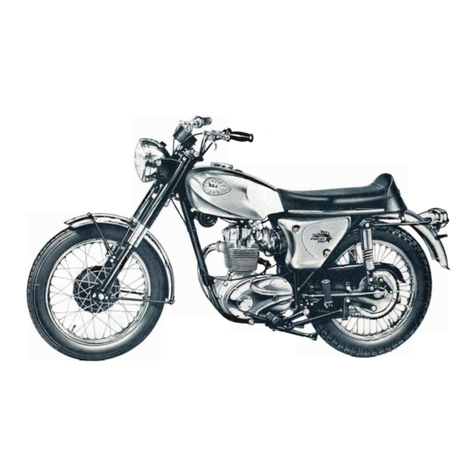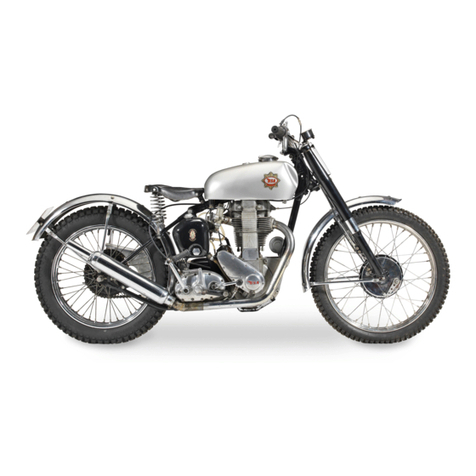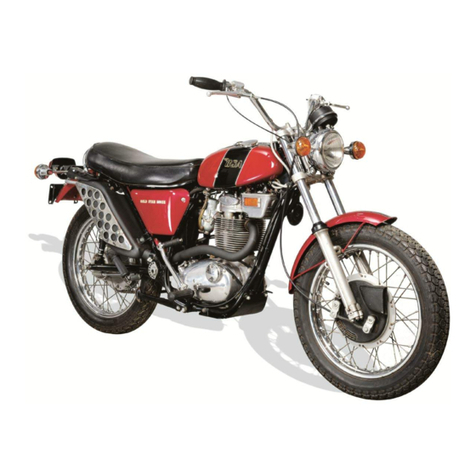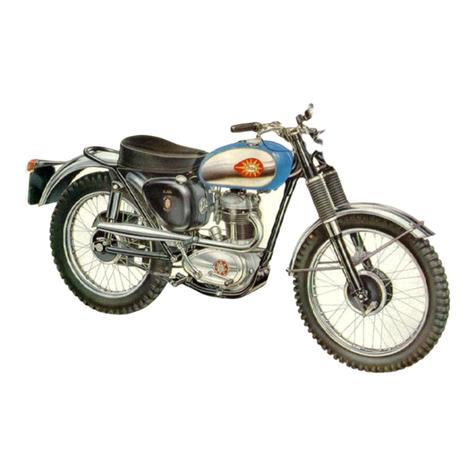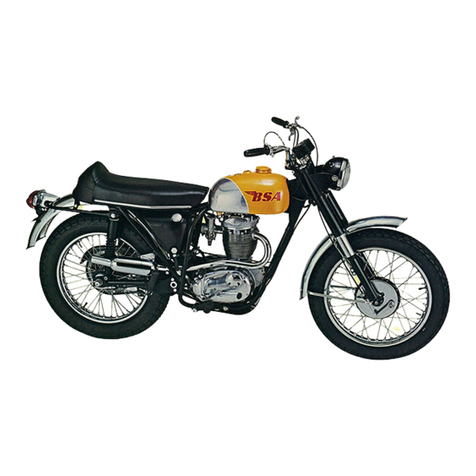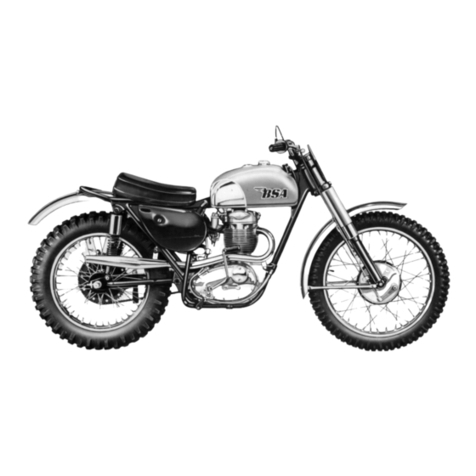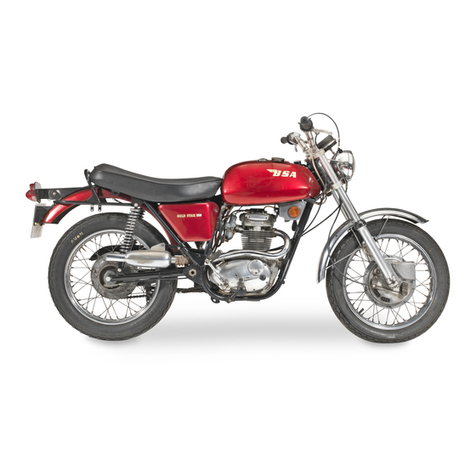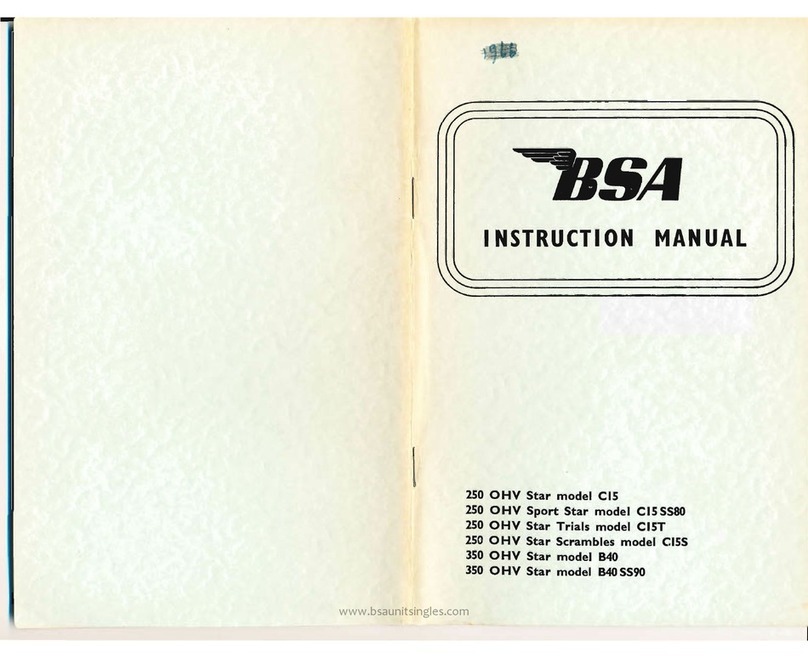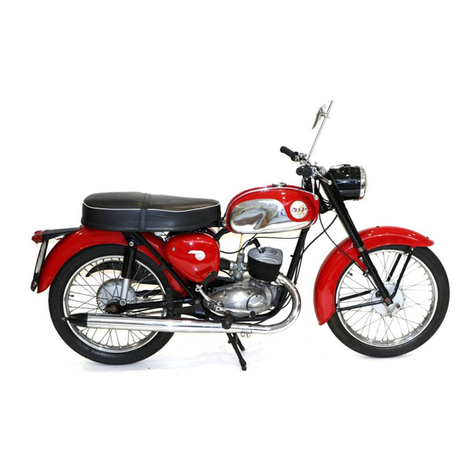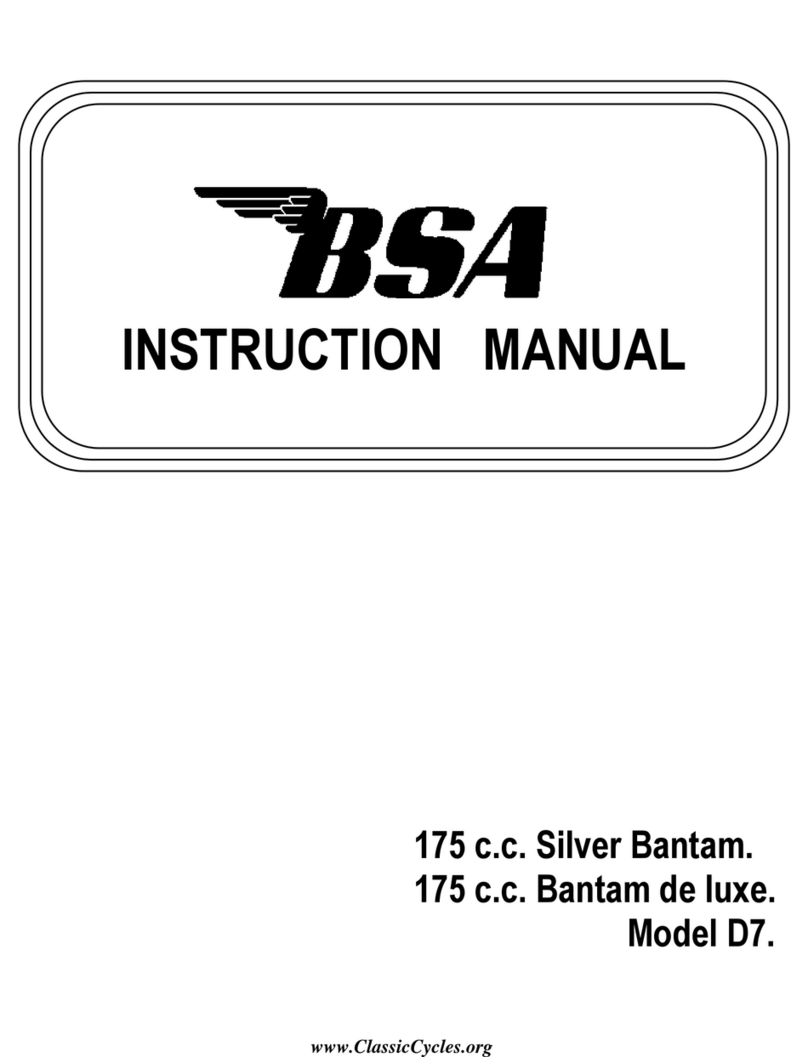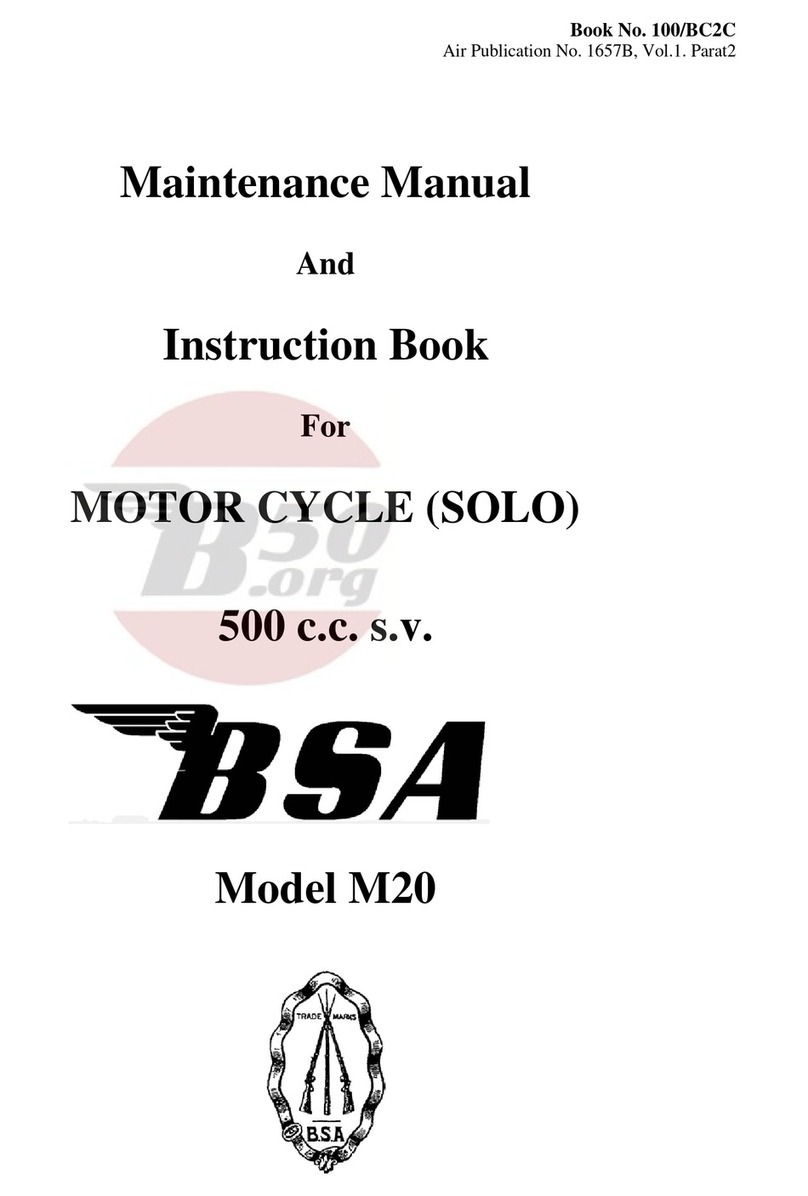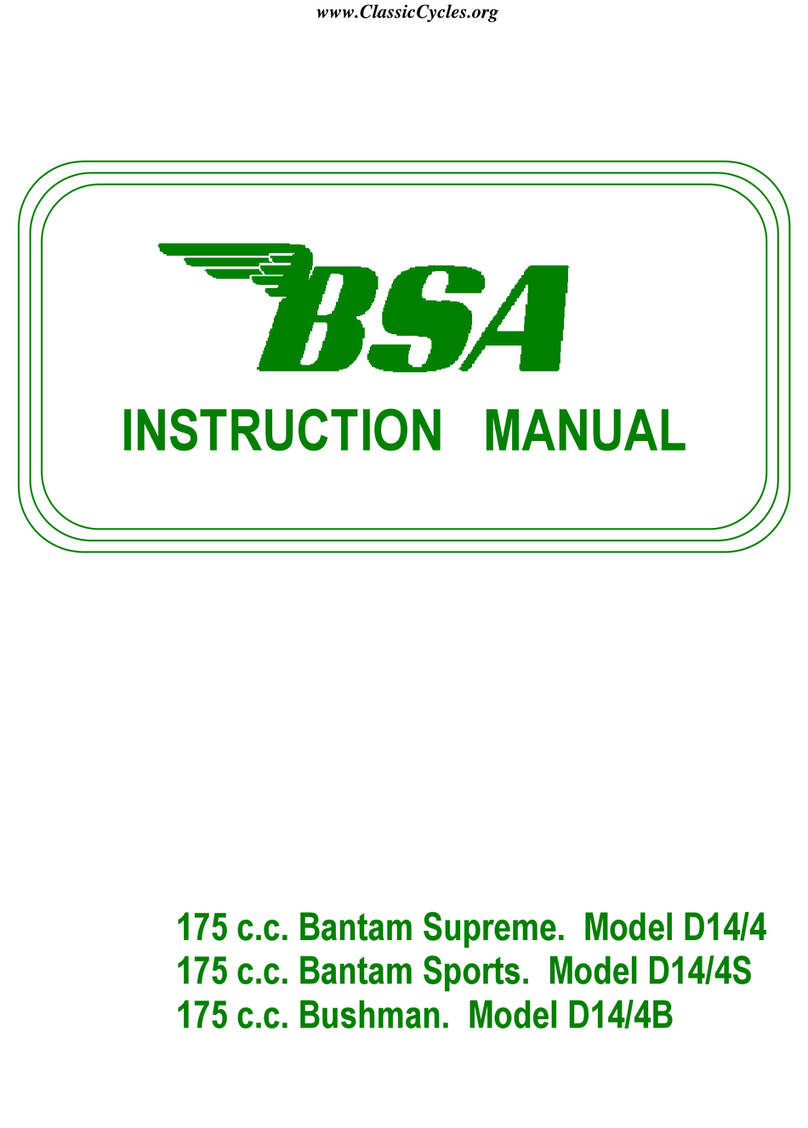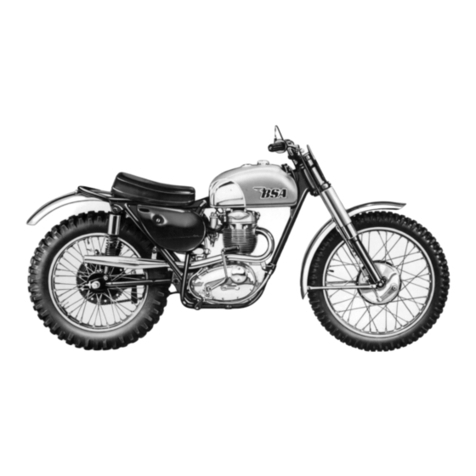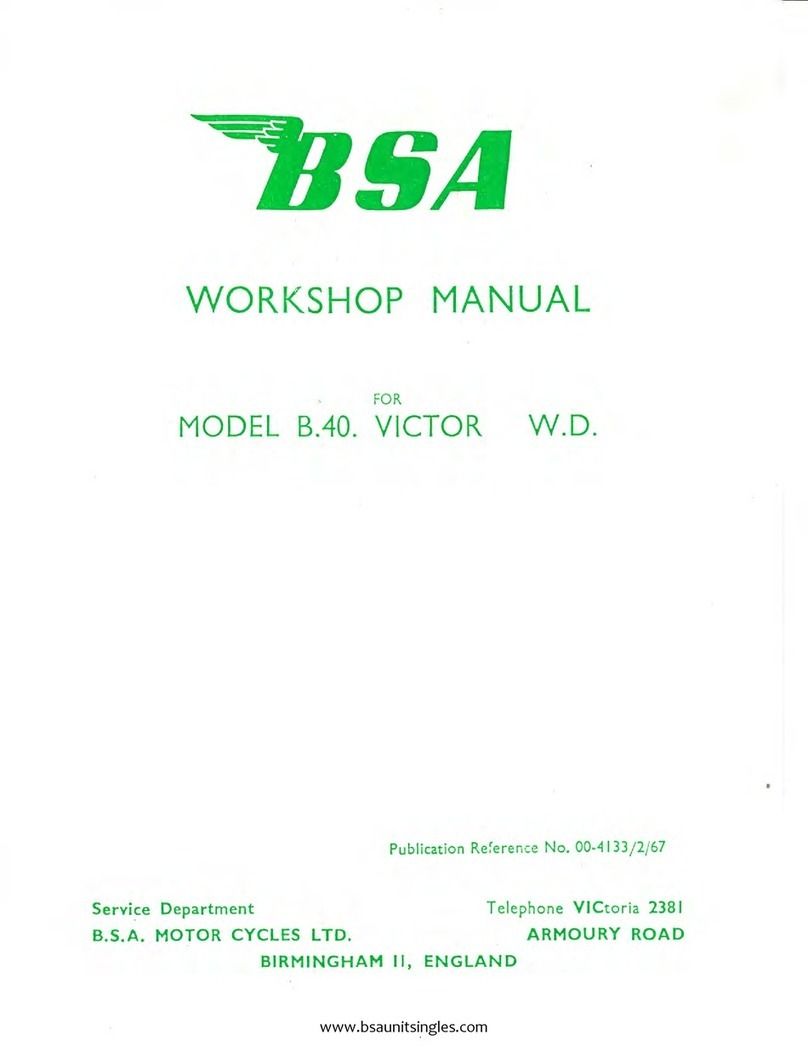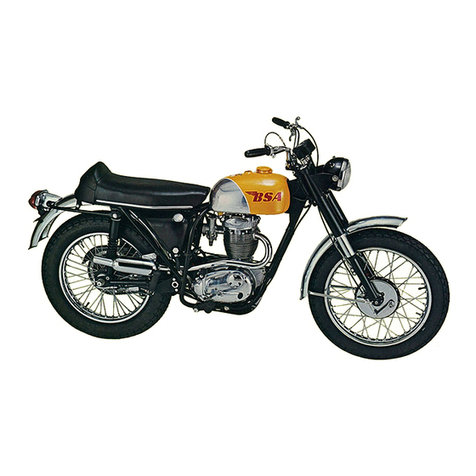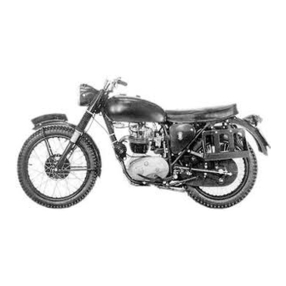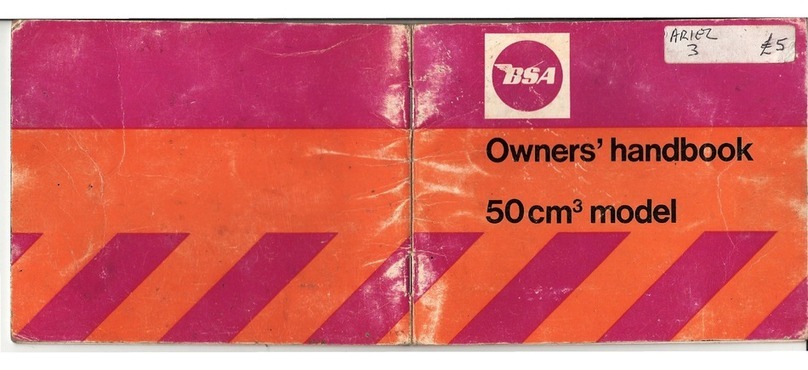
ENGINE ADJUSTMENTS
Which can be carried out without dismantling
OIL PRESSURE VALVES
As described under the heading “How the Lubrication
System Works” on page 3 there are two ball valves
incorporated in the lubrication system to prevent the
transfer of oil from the tank to the crankcase.
The spring loaded valve is located in the delivery
passage between the pump and the big-end, and lies
behind the hexagon plug at the lowest point of the
timing cover (see Fig. 5).
Fig. 5. Pressure valve in timing cover.
Should any foreign matter lodge between the ball and
its seating oil will gradually transfer from the tank
when the machine is left standing, and when the
engine is started up there will be a heavy discharge
of blue smoke from the exhaust.
To rectify, remove the plug, spring and ball. The
simplest way of removing the ball is to hold the hand
close to the orifice and gently turn the engine over,
when the ball will be forced out.
Clean the ball and the seating, and if on replacing
there is still doubt as to whether the ball is seating
properly, insert a small punch against the ball and
deal it a sharp tap with a light hammer. Finally
replace the spring and plug.
The other ball valve is located between the return
pump (Fig. 6), and apparent failure of the return
pump may be due to this ball having stuck in its
seating.
To rectify, remove the pump cover plate, insert a
piece of wire into the valve orifice and lift the ball off
its seating. Should the trouble keep recurring it may
be necessary to fit a new base plate to the pump.
On no account remove the oil pump unless it is
absolutely necessary.
EXHAUST VALVE LIFTER
The peg on the exhaust valve lifter inside the tappet
chest must always be well clear of the collar on the
exhaust tappet (see Fig. 7), otherwise the engine will
be noisy and the tappet clearances seriously
affected. Failure to check that there is clearance at
this point may result in a badly burnt exhaust valve.
Adjustment is carried out by means of the cable
adjuster at the side of the tappet chest.
Fig. 6. Ball valve below return pump.
TAPPET ADJUSTMENT
Before any attempt is made to adjust tappet
clearances, check that the exhaust valve lifter is
correctly adjusted as explained in the previous
paragraph.
To check and adjust tappet clearances, it is most
essential, owing to the special design of the cam
form (see Fig. 8), that the following procedure be
adhered to.
Fig. 7. Tappet and exhaust valve lifter.
Rotate engine forward until the inlet valve has just
closed (until tappet is just free to rotate).
Now adjust the exhaust tappet clearance to .012”.
Turn engine forward again until the exhaust tappet
clearance is just taken up (but before valve actually
starts to lift).
Now adjust inlet tappet clearance to .010”
8
